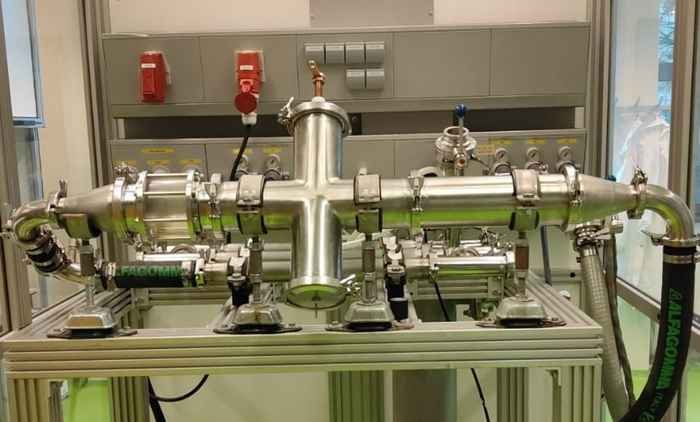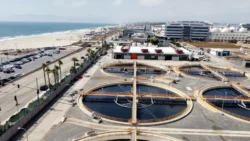Plasma-Assisted Catalytic Water Treatment

Introduction
Water is essential for all living organisms on Earth, but unfortunately, water pollution is a growing concern worldwide. Contaminants such as heavy metals, organic compounds, and pathogens can make water unsafe for consumption and for the environment. Traditional water treatment methods like filtration and chlorination have limitations in treating certain contaminants, prompting the need for innovative solutions. Plasma-assisted catalytic water treatment is a promising technology that can effectively remove a wide range of pollutants from water, making it safe for use.
Plasma-assisted catalytic water treatment involves the use of plasma, a high-energy form of matter, to generate reactive species that can break down pollutants in water. Catalysts are also used to enhance the degradation of pollutants and increase the efficiency of the process. This technology has gained attention in recent years due to its ability to treat a wide range of contaminants and its potential for cost-effective water treatment. In this article, we will discuss the principles of plasma-assisted catalytic water treatment, its applications, advantages, and challenges.
Principles of Plasma-Assisted Catalytic Water Treatment
Plasma is a highly reactive gas composed of ions, electrons, and excited species. It can be generated using various methods such as electrical discharges, microwaves, and lasers. When plasma is introduced into water, it produces reactive oxygen and nitrogen species, such as hydroxyl radicals and ozone, which have strong oxidative properties. These reactive species can break down organic compounds and oxidize metals, effectively removing pollutants from water.
Catalysts are used in plasma-assisted water treatment to enhance the degradation of pollutants. Catalysts are substances that can accelerate chemical reactions without being consumed in the process. In plasma-assisted water treatment, catalysts can increase the efficiency of pollutant degradation by providing a surface for the reactive species to react with the pollutants. Common catalysts used in this technology include titanium dioxide, iron oxides, and carbon nanotubes.
The process of plasma-assisted catalytic water treatment involves the following steps:
1. Plasma generation: Plasma is generated using an energy source such as an electrical discharge or microwave. The plasma is then introduced into water, creating reactive species.
2. Catalyst activation: Catalysts are added to the water to enhance the degradation of pollutants. The catalysts provide a surface for the reactive species to interact with the pollutants, increasing the efficiency of the process.
3. Pollutant degradation: The reactive species generated by the plasma attack the pollutants in water, breaking them down into smaller, less harmful compounds. The catalysts facilitate the reactions between the reactive species and pollutants, speeding up the degradation process.
4. Filtration and separation: After the pollutants have been degraded, the water is typically passed through a filtration system to remove any remaining particles or catalysts. The water can then be safely discharged back into the environment or used for various purposes.
Applications of Plasma-Assisted Catalytic Water Treatment
Plasma-assisted catalytic water treatment has a wide range of applications in water treatment and environmental remediation. Some of the key applications of this technology include:
1. Industrial wastewater treatment: Many industries produce wastewater that is contaminated with heavy metals, organic compounds, and other pollutants. Plasma-assisted catalytic water treatment can effectively remove these contaminants from industrial wastewater, making it safe for discharge or reuse.
2. Drinking water treatment: Plasma-assisted catalytic water treatment can be used to treat drinking water contaminated with pathogens, organic compounds, and other pollutants. This technology can provide a cost-effective and efficient solution for ensuring the safety of drinking water supplies.
3. Groundwater remediation: Groundwater is a valuable source of drinking water, but it can become contaminated with pollutants from industrial activities or waste disposal. Plasma-assisted catalytic water treatment can be used to remediate groundwater contaminated with heavy metals, organic compounds, and other pollutants, restoring it to safe levels for consumption.
4. Agricultural water treatment: Agricultural runoff can contain pesticides, fertilizers, and other contaminants that can pollute water sources. Plasma-assisted catalytic water treatment can be used to treat agricultural water, removing contaminants and protecting water quality.
Advantages of Plasma-Assisted Catalytic Water Treatment
Plasma-assisted catalytic water treatment offers several advantages over traditional water treatment methods. Some of the key advantages of this technology include:
1. Removal of a wide range of pollutants: Plasma-assisted catalytic water treatment can effectively remove a wide range of pollutants, including heavy metals, organic compounds, and pathogens. This technology offers a versatile solution for treating diverse types of contaminated water.
2. Energy-efficient: Plasma-assisted catalytic water treatment is an energy-efficient technology that uses electricity to generate plasma. Compared to other energy-intensive water treatment methods, such as reverse osmosis or UV disinfection, plasma-assisted catalytic water treatment can be more cost-effective and environmentally friendly.
3. Rapid treatment: Plasma-assisted catalytic water treatment can achieve rapid degradation of pollutants in water. The reactive species generated by plasma have strong oxidative properties, allowing for fast and efficient removal of contaminants.
4. Scalability: Plasma-assisted catalytic water treatment can be scaled up or down to meet the needs of different applications. This technology can be used for small-scale water treatment systems in remote locations or large-scale treatment plants for industrial wastewater.
Challenges of Plasma-Assisted Catalytic Water Treatment
While plasma-assisted catalytic water treatment offers many advantages, there are also some challenges that need to be addressed for its widespread adoption. Some of the key challenges of this technology include:
1. Cost: Plasma-assisted catalytic water treatment can be expensive to implement and maintain. The cost of plasma generation equipment, catalysts, and electricity can be a barrier for some applications, particularly in developing countries or remote areas.
2. Catalyst stability: The stability of catalysts used in plasma-assisted water treatment can be a concern. Catalysts can degrade over time or become deactivated, reducing their effectiveness in degrading pollutants. More research is needed to develop stable and long-lasting catalysts for this technology.
3. By-product formation: The degradation of pollutants in plasma-assisted catalytic water treatment can produce by-products that may be toxic or harmful to the environment. It is important to carefully monitor and manage the by-products generated during the treatment process to ensure they do not pose a risk to human health or the ecosystem.
4. Integration with existing treatment systems: Integrating plasma-assisted catalytic water treatment with existing water treatment systems can be challenging. Compatibility with other treatment processes, such as filtration or disinfection, needs to be considered to ensure the overall efficacy of the treatment system.
Future Directions
Despite the challenges, plasma-assisted catalytic water treatment shows great potential for addressing water pollution challenges in the future. Research and development efforts are ongoing to improve the efficiency, cost-effectiveness, and scalability of this technology. Some of the key areas of focus for future research and development include:
1. Catalyst development: Research on advanced catalyst materials and structures can improve the stability and efficiency of catalysts used in plasma-assisted water treatment. Innovative catalysts that can enhance pollutant degradation and reduce by-product formation are being explored.
2. Process optimization: Optimization of the plasma generation process and treatment parameters can enhance the efficiency and effectiveness of plasma-assisted catalytic water treatment. Studies on process kinetics, reactor design, and scalability are important for achieving optimal treatment outcomes.
3. Integration with other treatment technologies: Research on the integration of plasma-assisted catalytic water treatment with other water treatment technologies, such as membranes, adsorption, and advanced oxidation processes, can optimize treatment processes and improve overall water quality.
4. Field applications: Pilot-scale and field trials of plasma-assisted catalytic water treatment systems are needed to demonstrate the feasibility and effectiveness of this technology in real-world applications. Collaboration with industry partners and government agencies can help facilitate the implementation of this technology in various water treatment scenarios.
Conclusion
Plasma-assisted catalytic water treatment is a promising technology that offers a versatile and efficient solution for removing pollutants from water. By leveraging the oxidative power of plasma and the catalytic properties of catalysts, this technology can effectively treat a wide range of contaminated water sources, including industrial wastewater, drinking water, and groundwater. While there are challenges to overcome, ongoing research and development efforts are focused on improving the efficiency, cost-effectiveness, and scalability of plasma-assisted catalytic water treatment. With further advancements in catalyst development, process optimization, and field applications, this technology has the potential to become a key tool in combating water pollution and ensuring the sustainability of water resources for future generations.

